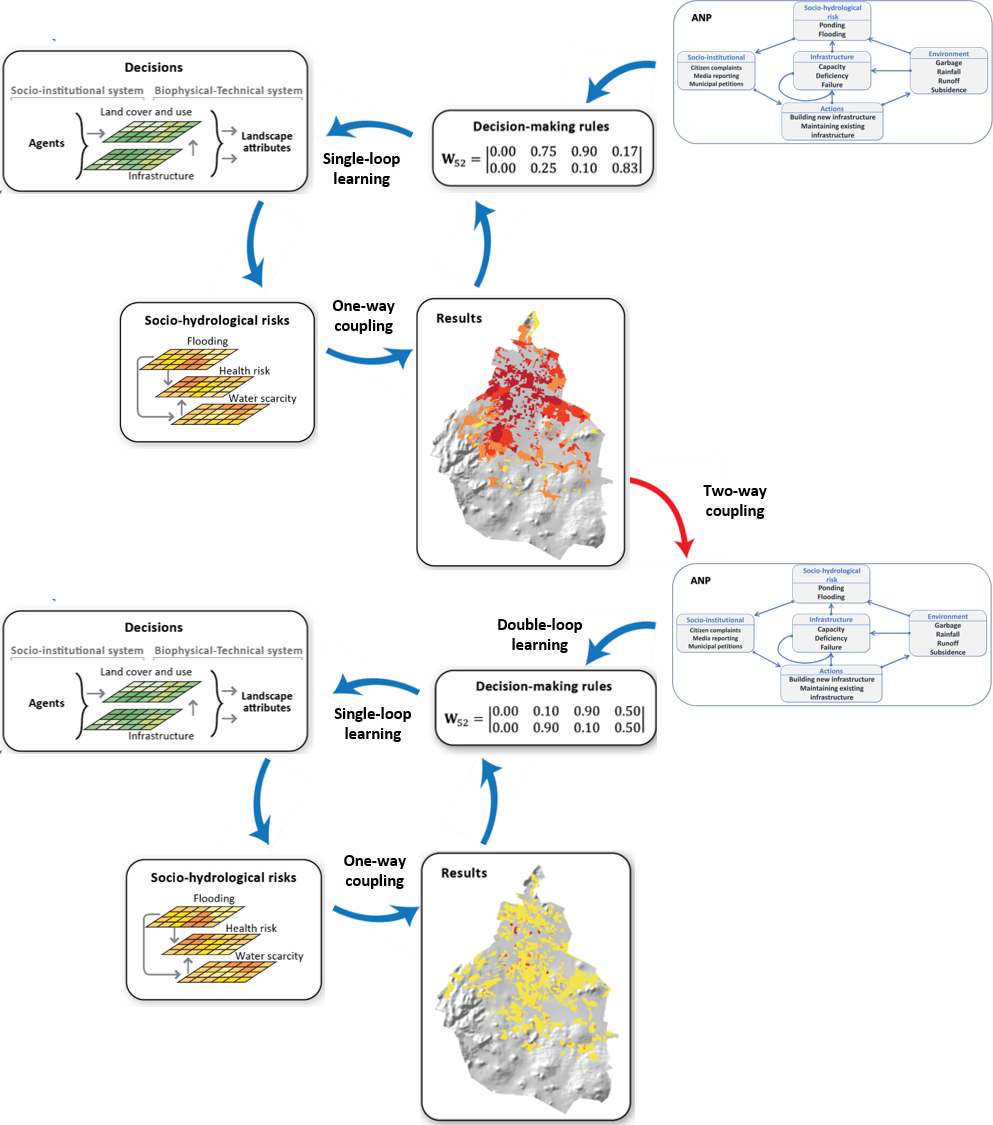Abstract
We present here MEGADAPT (MEGAcity-ADAPTation), a hybrid, dynamic, spatially-explicit, integrated modeling approach to simulate the vulnerability of urban coupled socio-environmental systems – in our case, the vulnerability of Mexico City to socio-hydrological risk. Although vulnerability is widely understood to be influenced by human decision-making, these decisions are rarely captured as endogenous to dynamic vulnerability models. The objective of this paper is to use MEGADAPT to demonstrate a methodological approach that allows vulnerability to be simulated as a reflexive process: the result of the interplay between mental models held by influential actors and the response of the biophysical and social world to the realization of decisions based on these mental models. MEGADAPT represents Mexico City as a self-organizing system. Hence, its computational framework involves the implementation of a suite of system models, geographic information system-multicriteria decision analysis, and geosimulation. A novel contribution of this approach is the use of the Analytic Network Process to synthesize the dynamic feedback between mental models and conditions of geographic automata. In this way, MEGADAPT depicts the shift in the behavior of socio-environmental systems from one-way coupling/single-loop learning to two-way coupling/double-loop learning, with the decision-making process as an endogenous system driver.

This work is licensed under a Creative Commons Attribution-NonCommercial 4.0 International License.
Copyright (c) 2019 Luis A. Bojórquez-Tapia, Marco Janssen, Hallie Eakin, Andres Baeza, Fidel Serrano-Candela, Paola Gómez-Priego, Yosune Miquelajauregui


